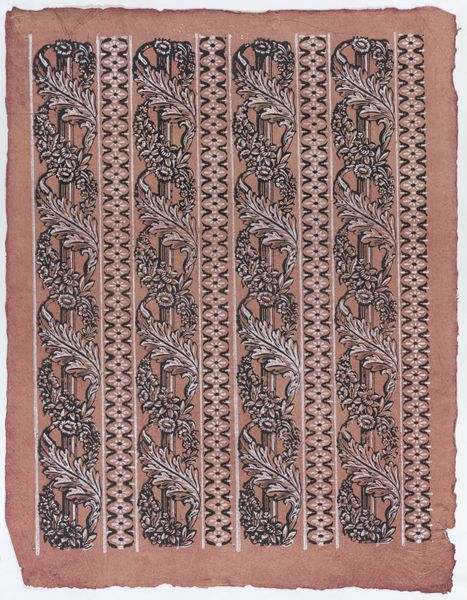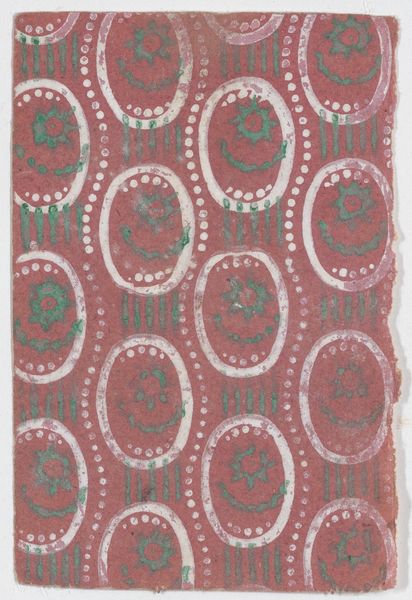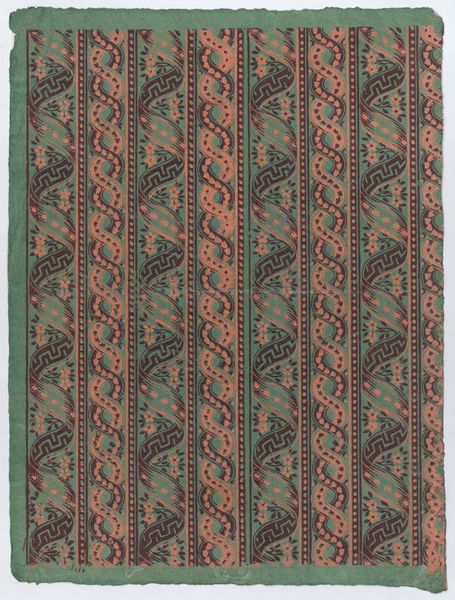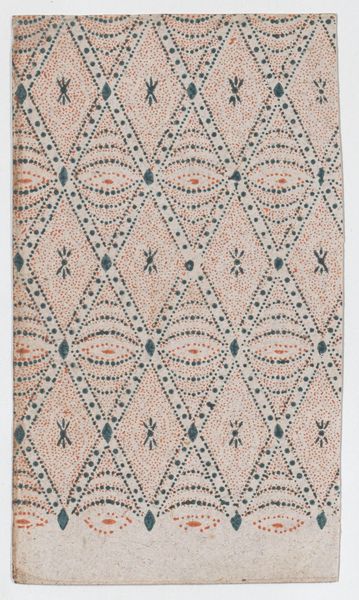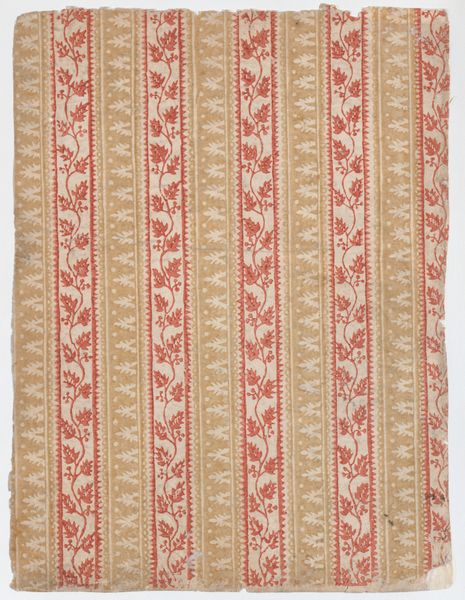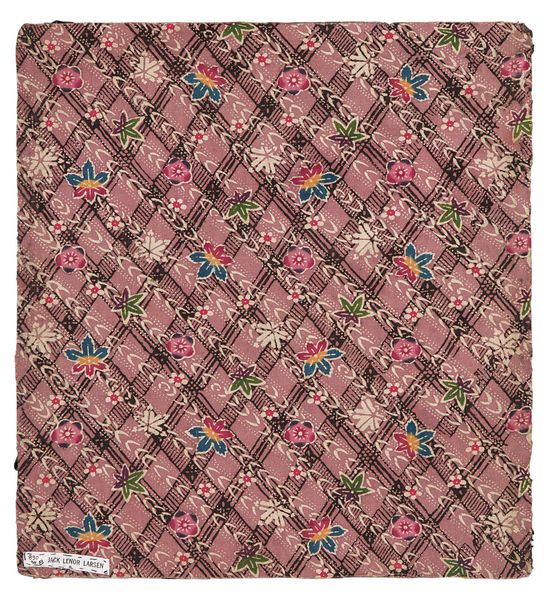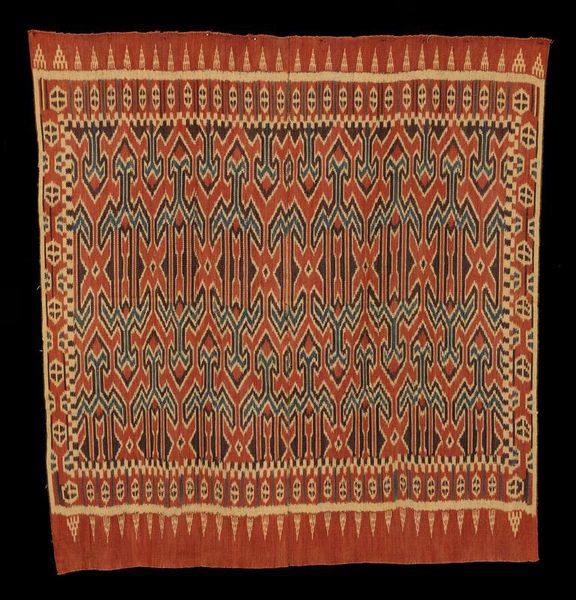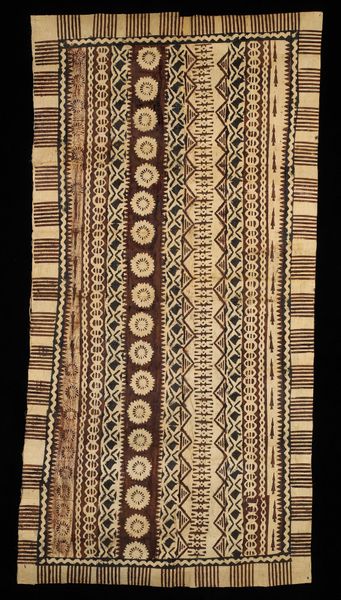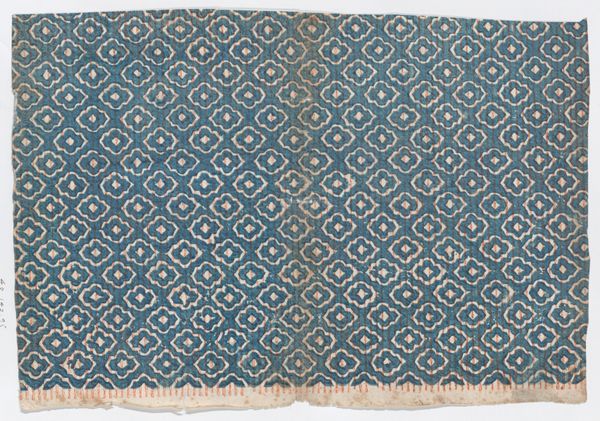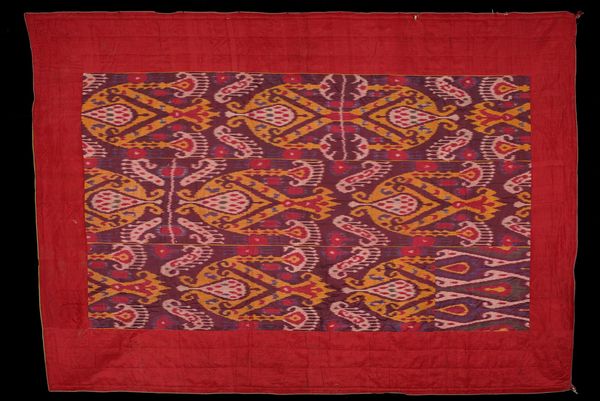
Sheet with three borders with paisley and floral patterns 1775 - 1875
print, textile
organic
textile
pattern design
organic pattern
repetition of pattern
regular pattern
textile design
imprinted textile
layered pattern
Dimensions: Sheet: 19 in. × 13 3/4 in. (48.2 × 35 cm)
Copyright: Public Domain
Curator: Looking at this piece, "Sheet with three borders with paisley and floral patterns," dating from 1775 to 1875, now in the Metropolitan Museum of Art, I’m immediately struck by its rhythmic visual language. The organic pattern seems very typical of its time. Editor: My first thought is "laborious." The meticulous, hand-rendered detail on display speaks volumes about the craft and the probable investment of time in its production. You know, you see the textile origins. Curator: Absolutely. We can consider the social context. These sorts of patterns and textiles would have been very symbolic, expressing cultural identity. Perhaps even echoing patterns transported across vast distances through trade and colonialism, bearing traces of power and exchange. Editor: Precisely. It prompts questions about who made it, under what conditions, and for what purpose. Was it a domestic production? Factory-made? I'd wonder about the labor involved. The choice of dyes also points to specific geographic origins and trading routes, giving insight into production costs and the communities that supported it. Curator: That brings up gender, doesn't it? Weaving and textile production, historically associated with women’s work. This might represent a form of coded communication, resistance, or solidarity within those communities. Were these women workers being exploited, or were they creating art to adorn themselves? Editor: We might even think about how this design may have influenced other printed or woven work of the time. Its formal qualities, the interplay of the floral and paisley, surely had material effects on the circulation of visual culture at the time. Also what kind of access did people have to this sort of design? How easily available was the material for purchase by all levels of society, or was it kept from many for specific use. Curator: Right. So, examining something as seemingly simple as these repeating patterns unveils complex dialogues about power dynamics, the relationship between art, labor, gender, and global networks. Editor: I concur. It is precisely by digging into the how and why of production that we enrich our understanding of its meaning and purpose. It also makes me want to see more examples of this sort of work from this time, and compare the craft that has been used.
Comments
No comments
Be the first to comment and join the conversation on the ultimate creative platform.

